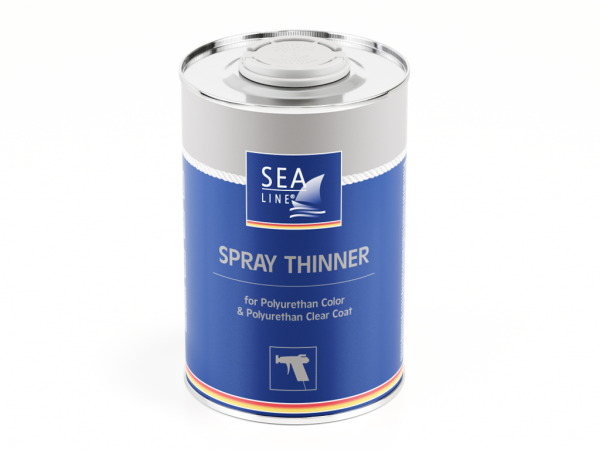
che conferiscono al prodotto le giuste caratteristiche di scorrevolezza nell’applicazione, durata della miscela e tempo di asciugatura.
Diluente per smalti poliuretanici colorati e trasparenti per applicazione a spruzzo
| SMALTI POLIURETANICI | Diluente per applicazione a spruzzo (SPREY THINNER) | |
| COLORE: | RAL : | |
| BIANCO | —- | 50–55% |
| ECRU | 1015 | 50–55% |
| ROSSO | 3003 | 45–50% |
| BLU | 5003 | 45–50% |
| BLU BRILANTE | 5015 | 45–50% |
| VERDE | 6029 | 45–50% |
| GRIGIO | 7000 | 45–50% |
| NERO | 9005 | 45–50% |
| VARNICE TRANSPARENTE POLIURETANICA | Diluente per applicazione a spruzzo (SPREY THINNER) | |
| COLORE: | ||
| PRIMER | TRANSPARENTE | 15–20% |
| HIGH GLOS TOPCOAT | TRANSPARENTE / LUCIDO | 0–5% |
Diluente per :
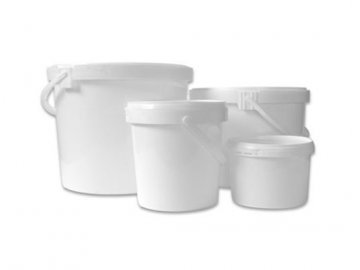
PLASTIC CUPS (BUCKETS) WITH LID PLASTIC BOTTLE PEHD WITH CORK TOUCH UP PAINT BOTTLE METAL CAN PLASTIC CUPS (BUCKETS) WITH […]
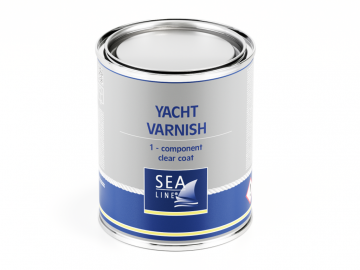
1 – component synthetic transparent clear coat. Recommended above waterline, exterior and interior. Recommended for wooden boats. Excellent flow, UV-stability […]
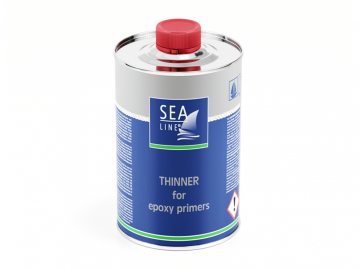
DESCRIZIONE DEL PRODOTTO: DILUENTE PER APPLICAZIONE A SPRUZZO che conferiscono al prodotto le giuste caratteristiche di scorrevolezza nell’applicazione , durata […]
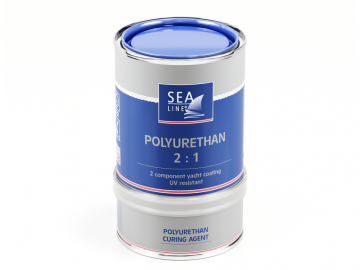
SMALTI POLIURETANICI Sea-Line® (COLORE) DESCRIZIONE DEL PRODOTTO : smalto poliuretanico colorato raccomandato specialmente sopra la linea di galleggiamento resistenti ai raggi […]
No, polyurethane is a 2-component paint (base + hardener) and after applying 2-component paint to 1-component paint, the proper adhesion of the paint to the surface will not be maintained, the paint will begin to wrinkle and surface defects will appear.
Yes, you can mix Sea-Line polyurethane paints. The only difference are the pigments of polyurethane paints that determine the color of the paint. But remember to keep the right proportions of base, hardener and thinner.

Il patch e compensare le irregolarità derivanti da danni durante la produzione

Barca protezione superficiale contro l’influenza di azioni distruttive di osmosi e la corrosione in ambienti difficili

Protezione contro l’acqua e contro gli effetti negativi delle radiazioni UV

Proteggere la parte inferiore della barca prima-tedesco ricoperta di alghe e conchiglie. La prevenzione dell’azione di acqua.

Rimozione efficace di ritenzione graffi, di aggiornamento e il colore del mantello gel o lacca

Laminazione, incollaggio e tappatura perdite

Per il riempimento di piccole fessure e ubyt gemme in gelcoat

Una gamma di prodotti utili quando si lavora costruttore di barche